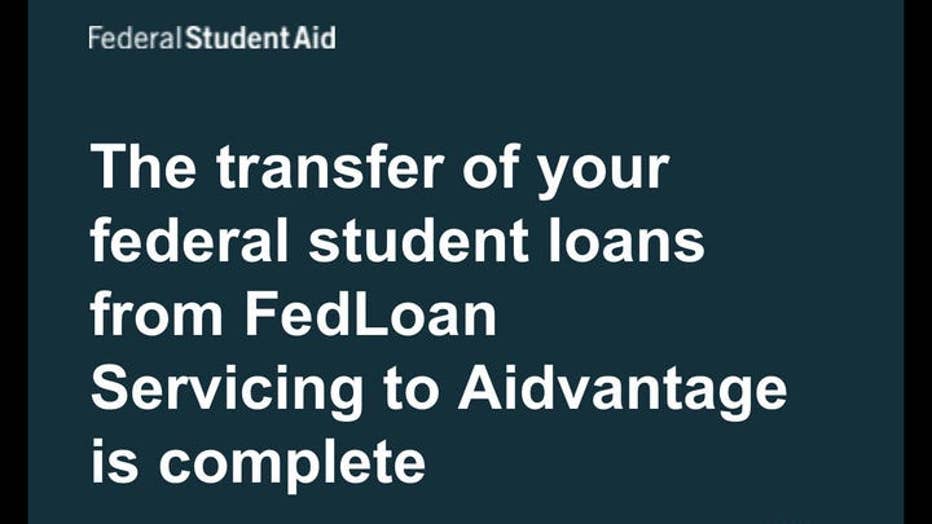3 student loan changes in 2022 that borrowers should know about

The new year brings a slew of changes for student loan borrowers, including the return to federal student loan repayment. (iStock)
The student loan industry saw significant reforms over the past few years during the coronavirus pandemic, and many of these changes will impact borrowers in 2022. Here are a few changes that student loan borrowers should be aware of in the next year:
- Payments (and interest charges) restart in May
- Many borrowers will have a new loan servicer
- It may be easier to qualify for student loan forgiveness
Keep reading to learn more about what's in store for your student loan debt in 2022, and consider your alternative student loan repayment options like refinancing. You can compare student loan refinance rates on Credible to determine if this debt relief strategy is right for your financial situation.
FIXED STUDENT LOAN REFINANCING RATES SET ANOTHER RECORD LOW
1. Payments (and interest charges) restart in May
Federal student loans have been in administrative forbearance since March 2020, when Congress passed the CARES Act relief package. During this time, payments have been paused and interest does not accrue on government-held student loans.
The Biden administration issued several forbearance extensions, the latest of which came in December amid the emergence of the omicron variant. But the current extension expires this April, which means that federal student loan borrowers will need to resume making payments in May.
The exact date when payments restart will depend on when a borrower's payment due date was before the pandemic. For example, a borrower who paid their student loans on the 15th of the month will need to restart payments starting May 15, 2022.
Borrowers who are unable to resume payments in May risk becoming delinquent on their student loans, which may result in wage garnishment. If you need more time to prepare for student loan repayment this spring, consider applying for up to 36 months of additional federal forbearance through an economic hardship or unemployment deferment request.
You can also consider your alternative debt repayment options, like refinancing to a private student loan at a lower interest rate to reduce your monthly payments. Keep in mind that refinancing your federal loans into a private loan will make you ineligible for select government benefits like income-driven repayment plans (IDR), COVID-19 administrative forbearance and some student loan forgiveness programs.
Visit Credible to see your estimated student loan refinance offers without impacting your credit score.
WILL PRESIDENT BIDEN CANCEL STUDENT DEBT WITH EXECUTIVE ACTION?
2. Many borrowers will have a new loan servicer
Several prominent student loan servicers, including Navient, FedLoan Servicing and Granite State Management & Resources, have exited the federal student loan servicing market. Borrowers whose loans were serviced by these institutions will have their loans automatically transferred to a new servicer.
Borrowers whose loans have been transferred to a new student loan servicer should have already received email communications through the office of Financial Student Aid (FSA). The Biden administration began notifying borrowers of student loan servicer transfers in November.

FSA email notifying borrower of student loan servicer transfer.
If your student loan servicer has changed, your loan terms — including the monthly payment, payment due date and interest rate — will stay the same. But if you're not satisfied with your current loan terms, you can consider refinancing while student loan refinance rates are near all-time lows.
Refinancing your student debt to a lower interest rate may help you reduce your monthly payment, pay off your debt faster and save money on interest over the life of the loan. Use Credible's student loan refinance calculator to determine if this debt repayment plan is right for you.
DEMOCRATS PUSH BIDEN TO CANCEL STUDENT LOANS AFTER HOUSE PASSES BUILD BACK BETTER
3. It may be easier to qualify for student loan forgiveness
The Education Department announced significant changes to several federal student loan forgiveness programs in 2021, which will make more borrowers eligible to have their loans discharged in 2022 and beyond. One of the most sweeping overhauls was to the Public Service Loan Forgiveness program (PSLF).
The PSLF program allows public servants to have the remainder of their federal student debt discharged after making 120 consecutive qualifying payments. Under the temporary extended PSLF waiver, eligible borrowers who apply for the program will be able to count more of their student loan payments toward that balance.
The Biden administration estimates that the recent PSLF update will bring 550,000 borrowers about two years closer to student loan cancellation, on average. Borrowers with Federal Family Education Loan (FFEL) Program loans and Federal Perkins Loans will need to consolidate into the Direct Loan program by October 2022 in order to qualify.
If you have loans that aren't eligible for student loan cancellation, such as private student loans, then it may be wise to refinance for better terms. See if you're eligible for a lower student loan interest rate by getting prequalified for free on Credible.
COLLEGE COSTS HAVE RISEN AT NEARLY 5X THE RATE OF INFLATION, REPORT FINDS
Have a finance-related question, but don't know who to ask? Email The Credible Money Expert at moneyexpert@credible.com and your question might be answered by Credible in our Money Expert column.

